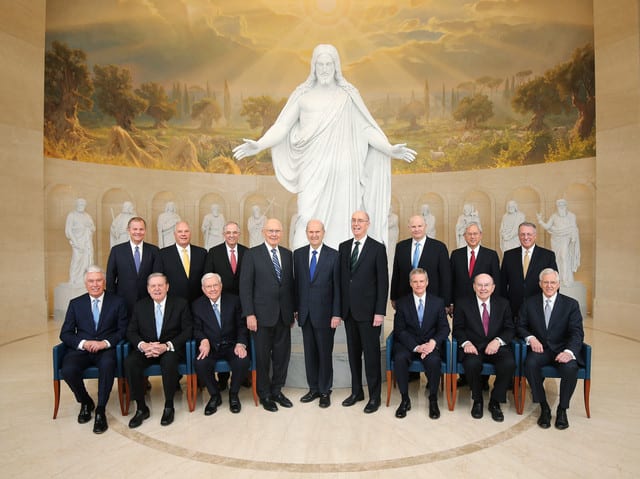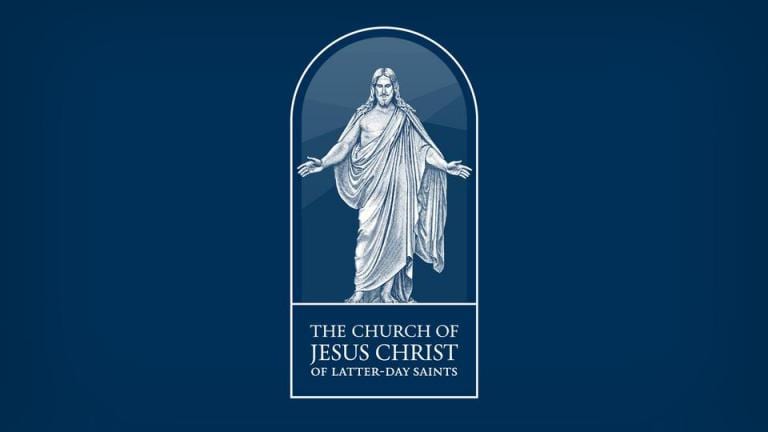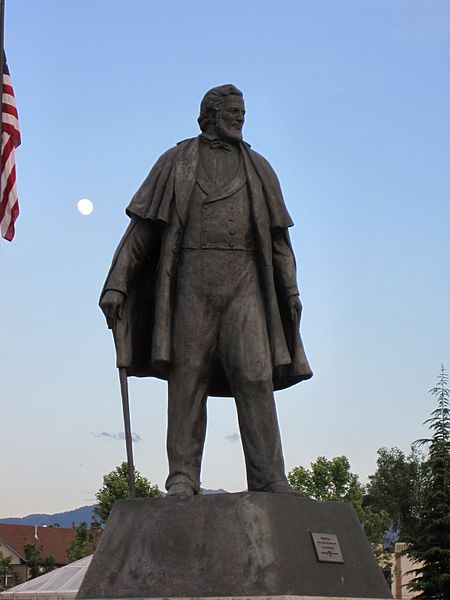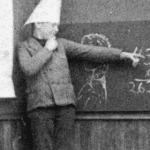
Some critics that I observe — most of them specimens of the type of detractor who finds fault, day in and day out, with virtually everything that the Church of Jesus Christ of Latter-day Saints does — have derived a great deal of hostile mirth from President Russell M. Nelson’s admonition that we try to retire terms like Mormon and Mormonism from active use, or, at least, that we try not to sponsor them ourselves. And they’ve really enjoyed his explanation that use of such terms “is a major victory for Satan.” They’ve mocked it and, it seems to me, have devoted considerable effort to failing to grasp his point.
You will perhaps recall what he said during remarks at the October 2018 semiannual general conference of the Church entitled “The Correct Name of the Church”:
[T]he name of the Church is not negotiable. When the Savior clearly states what the name of His Church should be and even precedes His declaration with, “Thus shall my church be called,” He is serious. And if we allow nicknames to be used or adopt or even sponsor those nicknames ourselves, He is offended.
What’s in a name or, in this case, a nickname? When it comes to nicknames of the Church, such as the “LDS Church,” the “Mormon Church,” or the “Church of the Latter-day Saints,” the most important thing in those names is the absence of the Savior’s name. To remove the Lord’s name from the Lord’s Church is a major victory for Satan. When we discard the Savior’s name, we are subtly disregarding all that Jesus Christ did for us—even His Atonement.
Probably every reader of this blog has encountered, or at least heard about, claims that Latter-day Saints are not Christians. (For me, it’s been several times again today.) Now, I’m under no illusion that such a damaging falsehood would vanish away were nicknames like LDS Church, Mormon Church, and Mormonism to disappear. I’m no starry-eyed utopian. But surely it’s more difficult to maintain that the “Church of Jesus Christ” is non-Christian than to contend that the “Mormon Church” is non-Christian. And even more so if the Church of Jesus Christ has, as its official symbol, something like this:

In other words, as I said back in October 2018, I fully understand why President Nelson feels so strongly about this issue. Although I’ve always rather liked the neatly efficient word Mormonism and although, even now, I’ve found no entirely adequate substitute, I can see why he (and the Lord) would prefer to see it lose its prominence.
And so can anybody who thinks about it very much. (Have you ever heard about the aftermath of 1992’s Hurricane Andrew in Florida and Louisiana, when one local official thanked both the members of the Mormon Church and the members of the Church of Jesus Christ of Latter-day Saints for their cleanup efforts?)
Here’s a case reported in Lee Nelson, Visions from Beyond the Veil (Springville, UT: Council Press, 2014). It concerns a woman in Oklahoma whose daughter Lori, much to the then-Baptist mother’s horror, had converted to the Church of Jesus Christ of Latter-day Saints and married a Church member. For two years, they did not speak. Eventually, though, during a health crisis involving the daughter, she met her daughter’s Latter-day Saint mother-in-law, Lola, and even witnessed a very effective priesthood blessing :
I was amazed by all these events. After it was over, I got Lola aside and asked her if the Mormons believed in Jesus Christ. She looked at me utterly amazed and said, “What do you think the name of our Church is?”
I told her I didn’t know. I had only heard the name Mormon up until this time. She told me the official name was The Church of Jesus Christ of Latter-day Saints. I told her I would like to know more. (73-74)
And there must surely be thousands of cases parallel to hers, and perhaps hundreds of thousands if not millions who, especially if we make it hard for them, never will learn the Church’s true name in this life.
So I welcome and support President Nelson’s exhortation to get the Church’s real name, and its real focus on Christ, out there before the world. Let there be no doubt about where we stand and about who is at the center of our faith.

This is an important article by a leading scholar of Brigham Young and probably the foremost authority on the 1844 succession crisis that followed the murder of Joseph and Hyrum Smith and that is the background of the Interpreter Foundation’s dramatic film Six Days in August: Ronald K. Esplin, “Brigham Young and violence: ‘Suffer wrong not do wrong’: Fundamentally, Brigham Young was a man of peace; if his tongue occasionally slipped, his actions did not, writes scholar of Latter-day Saint history”
If things go according to plan, I will shortly be interviewing Dr. Esplin on camera for the Interpreter Foundation’s forthcoming series of short-video features, Becoming Brigham, which is the next phase of the overall project of which Six Days in August was an initial component part. In the meantime, Ronald K. Esplin, “Authority, Keys, and “the Measures of Joseph”: A Detailed Exploration of 1844 Succession,” in Jeffrey M. Bradshaw, ed., Joseph Smith: A Life Lived in Crescendo (Orem and Salt Lake City: The Interpreter Foundation and Eborn Books, 2024), 2:745-882, is almost certainly the most significant article on the subject to date.

Europe has experienced more than its share of horrors during the past century or so, but, as demonstrated by this extract from the Christopher Hitchens Memorial “How Religion Poisons Everything” File™, its trials are not yet over: “Wheelchairs Donated by the Church Enable Independence in Europe.”












